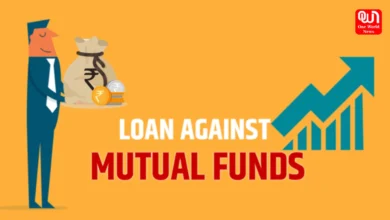Tax Saving Scheme: ELSS Or PPF, Which is Better; Know Details
"Decoding Tax-Saving Scheme: ELSS vs. PPF - Unveiling the Pros and Cons"
Tax Saving Scheme: ELSS Or PPF, Which is Better; Know Details
In the realm of tax-saving investment instruments in India, Equity Linked Savings Scheme (ELSS) and Public Provident Fund (PPF) stand out as the two most preferred choices. While various options such as Fixed Deposits, Unit Linked Insurance Schemes (ULIP), National Pension Schemes (NPS), and Small Savings Schemes offer tax-saving benefits under Section 80C, ELSS and PPF have gained popularity for their unique features.
Tax Saving Scheme ELSS: Tax Efficiency with Short Lock-in Period
ELSS funds are categorized as flexi-cap funds falling under Section 80C, providing individuals with tax deductions of up to ₹1.5 lakh per annum. What makes ELSS particularly attractive to investors is its short lock-in period of just 3 years, which is significantly shorter compared to other tax-saving investment schemes.
By investing in ELSS mutual funds, investors can benefit from tax savings of up to ₹1,50,000. For those falling into the 30 per cent tax bracket, this translates to potential annual savings of up to ₹46,800. ELSS funds primarily generate returns by investing in equity and equity-related instruments, making them an excellent choice for those seeking exposure to the stock market.
ELSS funds, also known as Flexi Cap Funds, allocate approximately 65% of their portfolio to equities across various market capitalizations, including large, mid, and small caps. This diversification aims to provide investors with the potential for higher returns while managing risk through a mix of different-sized companies.
Tax Saving Scheme PPF: The Government-Backed Long-Term Investment
On the other hand, Public Provident Fund (PPF) is a government-backed debt instrument offering triple tax exemptions, commonly known as the exempt-exempt-exempt (EEE) status under Section 80C. This means that the invested amount, the earned interest, and the maturity amount are all completely tax-free.
One of the key advantages of PPF is its capital protection, making it an appealing option for risk-averse retail investors. However, it’s crucial to note that PPF has a more extended lock-in period of 15 years, with an option for early closure allowed after 5 years. Despite the extended commitment, PPF has historically provided returns that surpass inflation rates and often outperform bank fixed deposits.
The interest rates on PPF are not fixed and are subject to quarterly revisions by the government based on the performance of bond yields. As of now, investors are earning a 7.1% return on their PPF investment.
Tax Saving Scheme Comparing ELSS and PPF
While both ELSS and PPF allow investors to avail tax benefits under Section 80C, they cater to different preferences and risk appetites.
Read more: Tax Saving Scheme EPF vs PPF: Which is the best way to save money?
ELSS is akin to a mutual fund scheme with a shorter lock-in period. However, it comes with market risks. Historical data suggests that ELSS has delivered better returns than PPF, making it an attractive option for those willing to take on market fluctuations.
On the contrary, PPF is a long-term, risk-free investment option backed by the Union government. For individuals seeking a secure investment with a reasonable return and tax-saving benefits, PPF emerges as the preferred choice.
Tax Saving Scheme Considerations for Investors
It’s essential for investors to weigh their risk tolerance, investment horizon, and financial goals when choosing between ELSS and PPF.
For those comfortable with market fluctuations and seeking the potential for higher returns, ELSS could be a suitable option, especially given its shorter lock-in period. However, it’s crucial to acknowledge the inherent risks associated with equity investments.
Read more: Tax Saving Scheme Budget 2023: What Women Can Expect from FM Nirmala Sitharaman
Conversely, investors with a low-risk tolerance and a long-term investment horizon may find PPF more aligned with their financial objectives. The government backing and the triple tax exemptions make PPF a secure choice, albeit with a more extended commitment.
Crafting a Tax-Efficient Investment Strategy
In conclusion, the choice between ELSS and PPF ultimately depends on individual preferences, risk appetite, and financial goals. Investors should carefully assess their investment horizon, willingness to bear market risks, and the need for liquidity before making a decision.
A well-thought-out investment strategy may involve a combination of both ELSS and PPF, balancing the potential for higher returns with the stability and security offered by a government-backed instrument. Diversifying one’s tax-saving portfolio can help individuals optimize their tax benefits while aligning with their unique financial circumstances.
We’re now on WhatsApp. Click to join.
In the dynamic landscape of personal finance, staying informed and consulting with financial advisors can empower investors to make sound decisions that contribute to long-term financial well-being. Whether opting for the market-driven efficiency of ELSS or the secure haven of PPF, informed choices pave the way for a tax-efficient and financially rewarding future.
Like this post?
Register at One World News to never miss out on videos, celeb interviews, and best reads.









